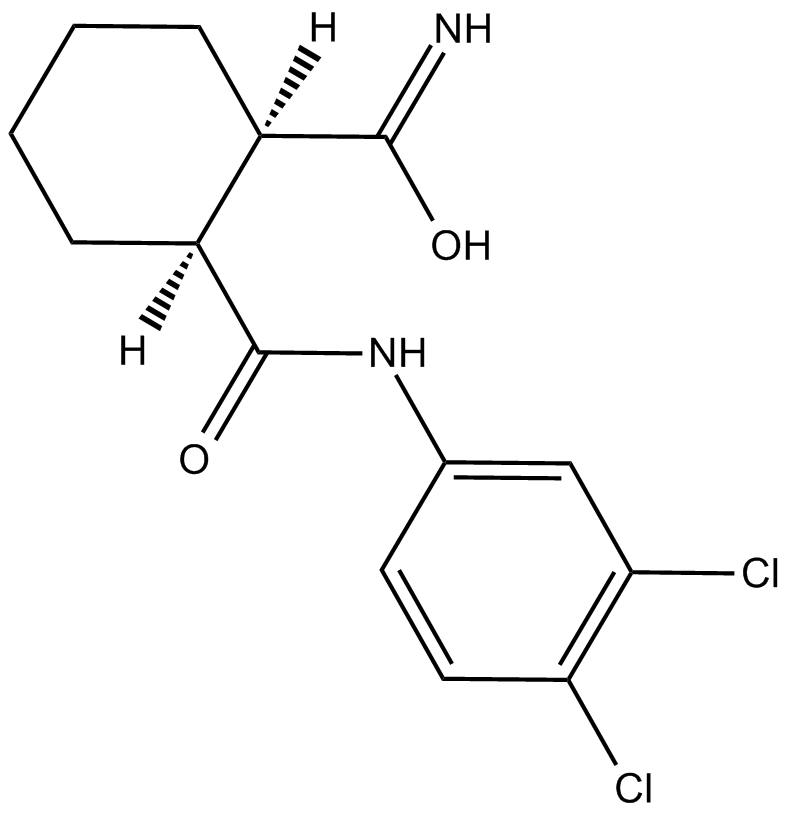Lu AF21934 |
| Katalog-Nr.GC15992 |
Lu AF21934 ist ein selektiver und ins Gehirn eindringender positiver allosterischer Modulator des mGlu4-Rezeptors mit einem EC50-Wert von 500 nM fÜr den mGlu4-Rezeptor.
Products are for research use only. Not for human use. We do not sell to patients.

Cas No.: 1445605-23-1
Sample solution is provided at 25 µL, 10mM.
EC50: 500 nM
Lu AF21934 is a positive allosteric modulator of mGlu4 receptors.
The mGlu4 receptor subtype of the group III mGlu is mainly a presynaptic auto- or hetero-receptor. Its stimulation results in an inhibition of glutamatergic or GABAergic transmission and release
In vitro: Lu AF21934 has been identified as a brain-penetrating positive allosteric modulator of mGlu4 receptors. In broad in-vitro screens, Lu AF21934 could potentiate the glutamate response at the mGlu4 receptor with an Emax=120% and a glutamate fold-shift FS=5. Lu AF21934 did not showed any significant affinity for 70 GPCRs at 10 μM, but acted as a weak positive allosteric modulator of mGlu6 receptor, as well as an antagonist of adenosine A2A and 5-HT2B receptors [1].
In vivo: In rats, harmaline triggered tremor as manifested by an increase in the power within 9-15Hz band and in the tremor index. Harmaline also induced a biphasic effect on mobility, initially inhibiting the exploratory locomotor activity of rats, followed by an increase in their basic activity. Lu AF21934 at 0.5-5 mg/kg sc did not influence tremor but at doses of 0.5 and 2.5 mg/kg reversed harmaline-induced hyperactivity. MGlu4 mRNA expression was found to be high in the cerebellar cortex and low in the inferior olive [1].
Clinical trial: Up to now, Lu AF21934 is still in the preclinical development stage.
Reference:
[1] Ossowska K,Wardas J,Berghauzen-Maciejewska K,et al. Lu AF21934, a positive allosteric modulator of mGlu4 receptors, reduces the harmaline-induced hyperactivity but not tremor in rats. Neuropharmacology.2014 Aug;83:28-35.
Average Rating: 5 (Based on Reviews and 39 reference(s) in Google Scholar.)
GLPBIO products are for RESEARCH USE ONLY. Please make sure your review or question is research based.
Required fields are marked with *




















